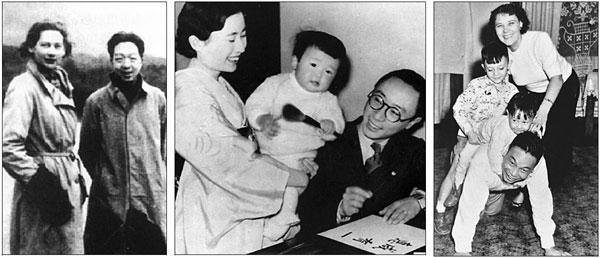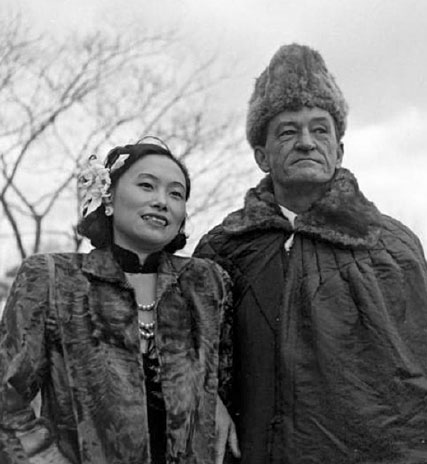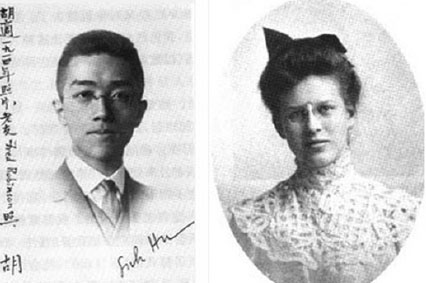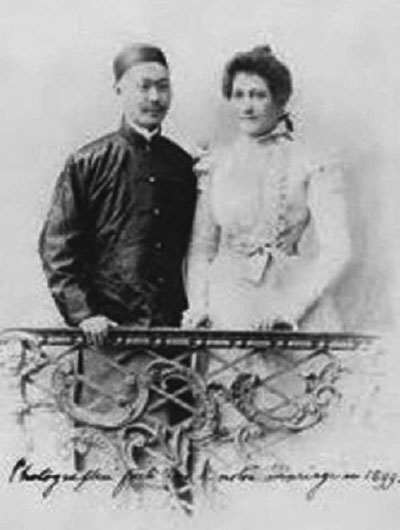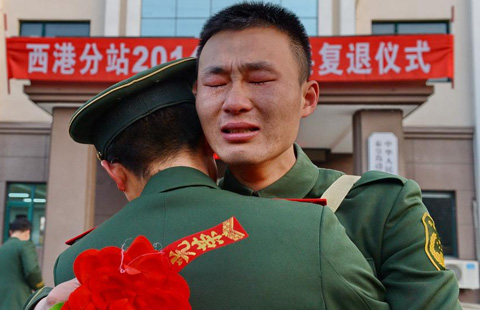Textbook romance
Updated: 2014-11-26 06:44
By Liu Zhihua(China Daily USA)
|
|||||||||
A tireless writer shines a light on interracial relationships during the Republic of China days. Liu Zhihua reports.
Pan Jianbing, a school teacher from Quanzhou in eastern China's Fujian province, is the author of a rare book on interracial relationships from the country's past.
In July, Pan published Romance of the Republic of China: Interracial Relationships That Cannot Be Outshined in which he reveals details of interracial relationships involving government officials, scholars and royal family members in the Republic of China (1912-49) - a period when a rise in such relationships attracted public attention.
|
Left: Yang Xianyi and Gladys Yang. Center: Aisin-gioro Pu Jie with his Japanese wife, Saga Hiro, and their daughter. Right: Chiang Ching-kuo with his Russian wife, Faina Epatcheva Vahaleva (Chiang Fang-liang), and their children. Photos Provided to China Daily |
The graduate from East China Normal University with a major in Chinese has written six books since 2010 on the Republic of China's history. His first was Arbitrary Lin Yutang, which is a biography of Chinese writer Lin Yutang (1895-1976). By 2012, he wanted to write a book on interracial relationships from the time before New China's founding in 1949.
"While doing research on the first five books, I came across many references to interracial relationships and marriages in the Republic of China, and how couples often needed to get over obstacles to be together," Pan tells China Daily.
"Compared with their love, the so-called romance in modern Chinese TV series and popular novels is superficial. It just occurred to me that I should write a book on interracial romance to tell people how great love can be."
Pan's latest book begins with stories of Lu Zhengxiang, a Chinese diplomat and his Belgian wife Berthe Bovy. The couple's romance is captured through the last phase of the Qing Dynasty (1644-1911) and the early days of the republic. The book ends with accounts of love between Chiang Ching-kuo, Chiang Kai-shek's son, and the son's Russian wife Faina Epatcheva Vahaleva.
The book also speaks of eight other interracial relationships, such as those involving Chinese scholar Hu Shih and his 50-year romance with Edith Clifford Williams, an American woman who madly loved Hu and died unmarried at age 85, and the life stories of Anna Chan Chennault and World War II hero Claire Lee Chennault.
Tales of Aisin-gioro Pu Jie, one of the last Qing Dynasty royals, and his wife Saga Hiro, who was from the Japanese aristocracy, are all found in the book. There are few other instances of interracial relationships in Pan's book although the Chinese opened up to foreigners rather cautiously then.
The Chinese who married foreigners were often males of high social status.
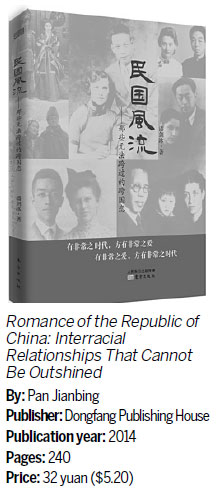
Pan selected the 10 couples and wrote on them in a chronological order because he wanted to keep readers informed of the evolving social background, Pan says.
The author is most impressed by the love story of Yang Xianyi and Gladys Yang, the couple known for translating many Chinese classics into English, including A Dream of Red Mansions.
Born into a wealthy family in Tianjin in 1915, Yang met his future wife Gladys Tayler in 1936 at the Merton College, Oxford, where he was studying.
Gladys Yang spent her early childhood in China as the daughter of a missionary and later enrolled into Chinese studies at Oxford.
Despite opposition from her mother, the two got engaged, and returned to China in 1940 to get married, although they were aware that the Yang family had no money left and that the country was faced with wars and poverty.
They made a living as college teachers and translators, and were happy despite the odds.
When Chiang Kai-shek retreated to Taiwan in 1949, the Yangs also were given plane tickets to follow, but they stayed behind on the Chinese mainland, because they believed the Communist Party would be a better choice for the Chinese than the Kuo-mintang.
They became respected translators in New China, but as China was dragged into the madness of the "cultural revolution" (1966-76), the couple was imprisoned for their independent views as intellectuals.
Beginning in 1968, they spent four years in different jails, without any idea about one another or the lives of their son and two daughters, who were also unfairly treated. The son committed suicide in 1979 in Britain.
But their love for each other and Chinese culture survived, and they worked with great passion after their jail time.
"I'm deeply moved by their passion for translation, their optimism despite the cruelty of fate, and their strong love for each other," Pan says.
Pan has listed hundreds of references in his appendix. He says to be accurate on facts, he devoured biographies of relevant people for about six months before starting to write the book.
On Douban.com, a popular Chinese book review website, readers commented that the book is a good way to know about the history of the Republic of China, and many said that they were deeply moved by the stories it tells.
Contact the writer at liuzhihua@chinadaily.com.cn
|
Anna Chan Chennault and World War II hero Claire Lee Chennault. |
|
Hu Shih and Edith Clifford Williams. |
|
Chinese diplomat Lu Zhengxiang and his Belgian wife, Berthe Bovy. |
(China Daily USA 11/26/2014 page8)
Most Viewed
Editor's Picks

|

|

|
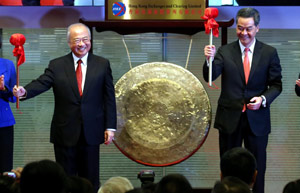
|

|

|
Today's Top News
China's tire firms urge govt to fight US action
Chinese men spending more on facial care
Goal to cut emissions can be met
PLA opens bidding to lower costs
WeChat turns to students to expand its presence in US
Graft fight dents overseas spending
Hagel move won't affect China-US ties: experts
China's nuclear power bid saluted
US Weekly

|

|
